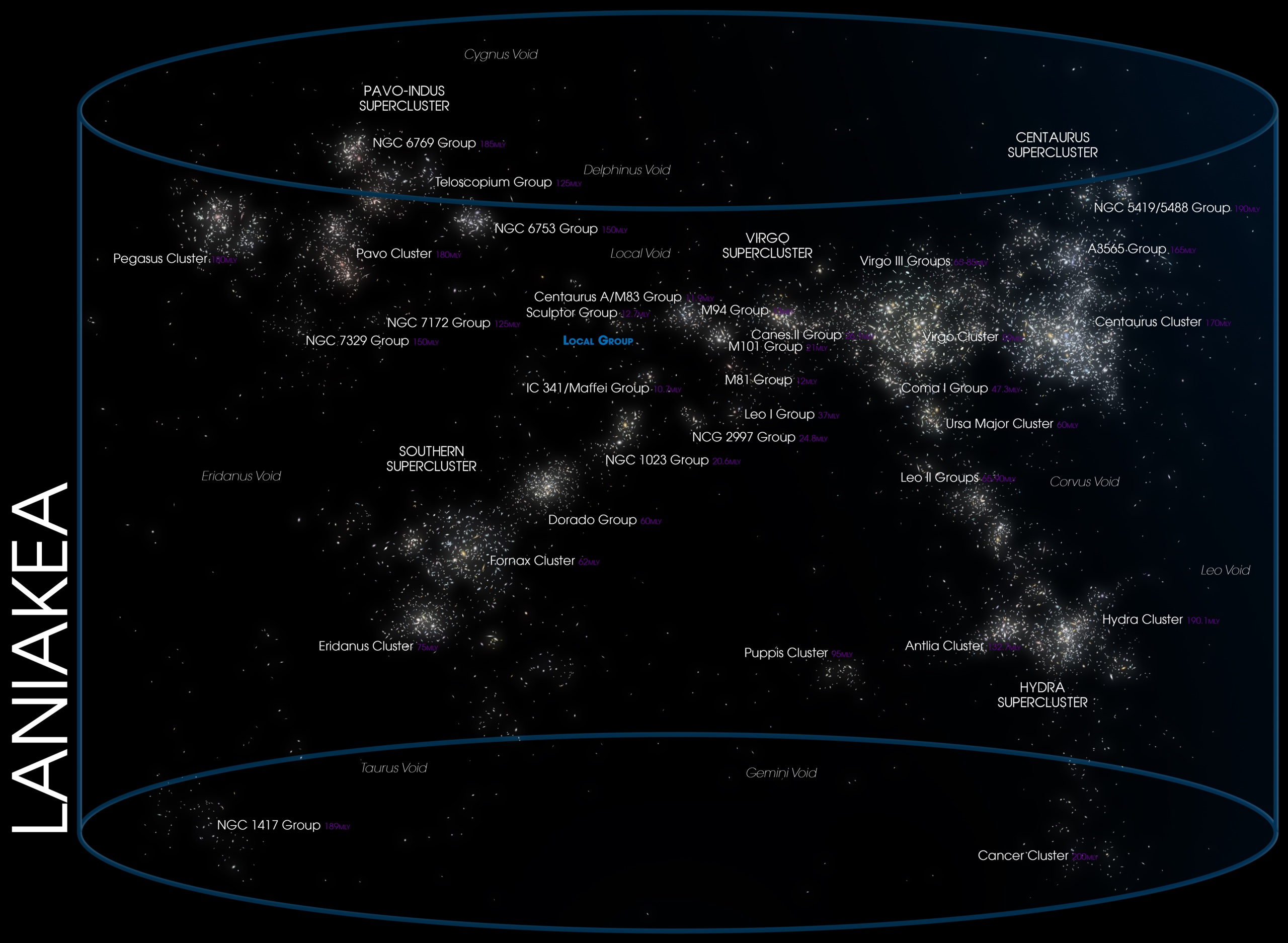One of the great unsolved mysteries of cosmology is known as the Hubble tension. It stems from our inability to pin down the precise rate of cosmic expansion. There are several ways to calculate this expansion, from observing distant supernovae to measuring the Doppler shift of maser light near supermassive black holes, and they all give slightly different results. Maybe we don’t fully understand the structure of the Universe, or maybe our view of the heavens is biased given that we are located deep within a galactic supercluster. As a new study shows, the bias problem is even worse than we thought.
If we were floating deep in space, far away from any galaxies, then our view of cosmic expansion would be free of gravitational influences and we could better see how distant galaxies move away from us. Since we are part of a local cluster of galaxies, we have a bit of bias in our data. This is why many local galaxies are blue-shifted. The Universe isn’t contracting near us, we’re just in a galactic gravitational well. We can easily account for this bias, so it isn’t a problem. However, given the Hubble tension, a team recently looked for gravitational biases beyond the local group, hoping it would solve the issue.
They looked at the largest gravitational structure we’re a part of, known as the Laniakea Supercluster. It is a massive cluster of galaxies more than 520 million light-years across, containing more than 100,000 galaxies, including the Milky Way. Our local group is being pulled toward the heart of Laniakea, and thus our motion through the Universe could skew our observations of cosmic expansion.
When the team measured the gravitational influence of the supercluster as a whole, they found it does bias our observations by about 2% – 3%. But it’s biased in the wrong direction. In other words, by not taking the effect of Laniakea into account, the Hubble tension seemed smaller than it actually is. These new results show that the tension is 2% – 3% greater than we thought. Even some of the more recent Hubble constant measurements that seemed encouraging aren’t enough to account for the Laniakea bias.
Removing subtle biases from our cosmological data is challenging, so it is possible that further observations may swing the results back in the right direction. But we can’t rely on bias alone to solve this mystery. Clearly, something subtle and strange is going on, and the solution isn’t obvious. It will take a great deal more study to understand Hubble’s tension.
Reference: Giani, L., et al. “An effective description of Laniakea and its backreaction: Impact on Cosmology and the local determination of the Hubble constant.” arXiv preprint arXiv:2311.00215 (2023).

Dr. Thomas Hughes is a UK-based scientist and science communicator who makes complex topics accessible to readers. His articles explore breakthroughs in various scientific disciplines, from space exploration to cutting-edge research.








